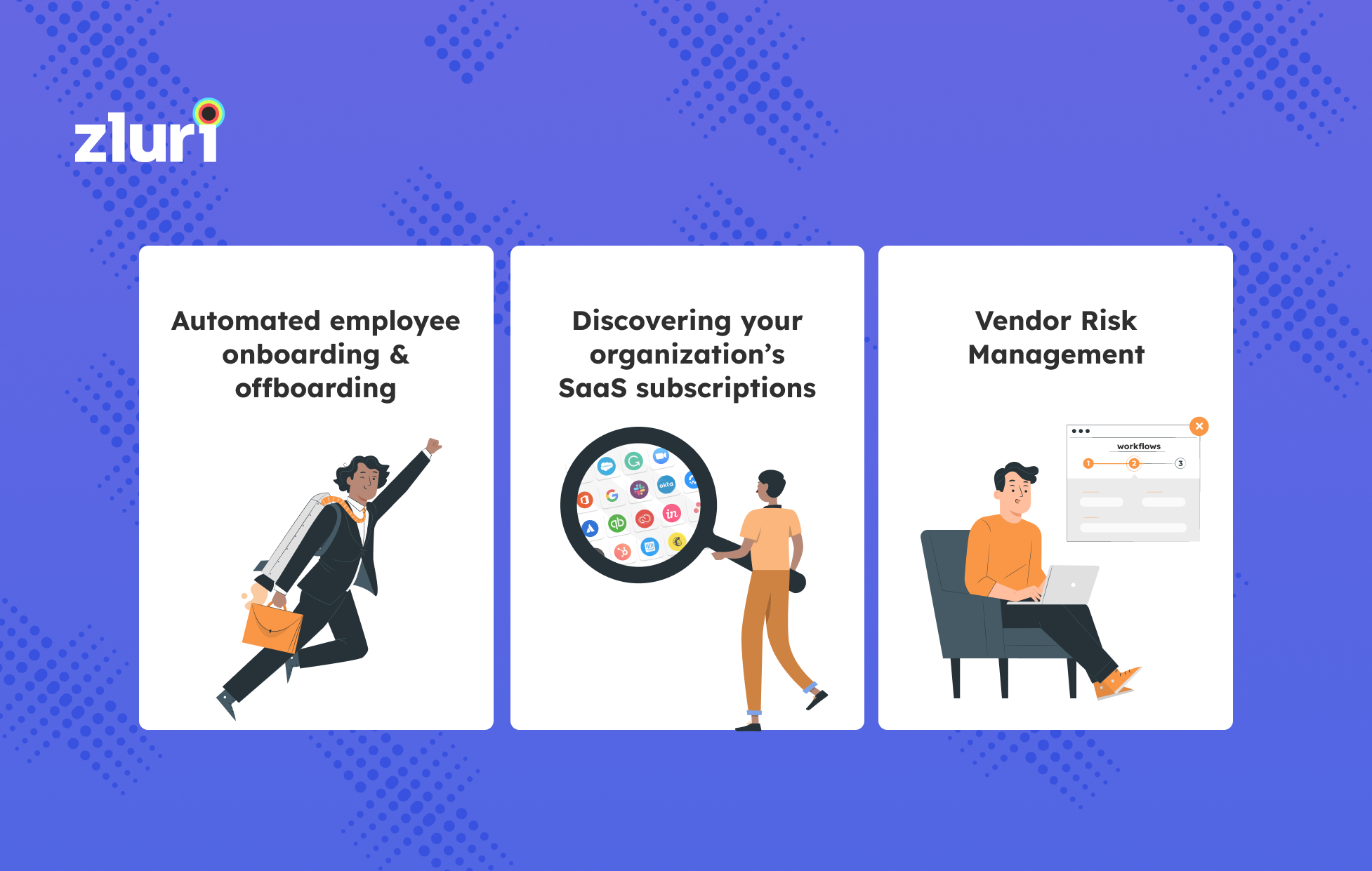Security & Compliance
• 4 min read
How IT Teams Can Prevent Insider Threats in Organization
18th April, 2022
SHARE ON:
Data breaches can not only affect the reputation of a company but may also lead to hefty fines. In the worst case, it can become the reason for businesses to shut down.
Every business possesses sensitive information that needs to be protected from threats. The threats can be because of some external or internal person. Threats due to former employees, current employees, or other business associates are known as insider threats.
Any users or associates who have access to the information can cause potential harm to the company if they misuse it. Not only that, a former employee with no access to the information but who knows the loopholes may exploit to misuse the information.
Security teams often give more emphasis to managing and protecting information from external threats. But it is equally important to protect sensitive information from insiders too.
Mainly there are two distinct types of insider threats that can be caused by employees, former employees, or business associates.
A malicious insider can steal the information knowingly. On the other hand, a negligent insider unknowingly or mistakenly acts as an agent for threat.
In this post, we’re going to discuss various practices which IT and security teams can incorporate into their organizations to prevent insider threats. Let’s dive deep into it directly.
Best Practices to Prevent Insider Threats
Monitoring and analyzing users' behavior is a basic level of security to understand and derive the level of risk associated with specific users. A user who often logs at odd times accesses irrelevant information or downloads information that is not related to work. These are some of the behaviors that can be monitored and enquired about whenever detected to prevent any threat.
Enforce least privilege: Always ensure that users have only access to those resources which are needed to complete their task. Revoke any extra privileges. A good practice is to regularly review the access privileges of different users and make changes as per their requirements. In this way, organizations can ensure that only authorized users have access to the resources which they need only.
Automate offboarding: Once an employee leaves the organization, ensure that access to all the resources is revoked. Offboarding can be a hassle if not done properly. Organizations can use different tools to ensure proper and hassle-free offboarding. This not only saves time but also prevents the risk of threats from former employees.
Enforce security policies: Document data management policies and share them with all the relevant users. In the document, you can include how data is collected, stored, and processed as well as different levels of access controls of the data. Make sure that all users are well aware of the organization's security policies.
If your organization permits BYOD (bring your own devices), then clearly state how data is used, shared, or stored if users are working on their own devices. Further, define strict and strong password policies and enforce multi-factor authentication (MFA) so that even in case a user forgot or lost a device somewhere, no one else can access it.
Ensure that all users are following the policies and list down the potential consequences of not adhering to the organization's security policies.Train and educate employees: Most insider attacks happen due to employees unknowingly allowing or enabling attacks. This happens when an employee downloads a suspicious file, plugs an infected USB in the work system, or opens an email containing a phishing element.
To minimize and eliminate such sorts of mistakes by employees, organizations must timely train and educate employees about cybersecurity. Also, educate employees about how to respond to such sort of threats whenever they detect them. The security team should also provide proper and timely support to employees to address their concerns.Restrict data transfer: Restrict employees from downloading files and exporting them into external sources such as USB or hard drives. Also, restrict sharing of information with external sources. This way, you'll be able to prevent data transfer as well as reduce the risk of accidentally sharing confidential information with external sources. Limiting sharing of sensitive information outside of your organization's network ensures that your data is protected.
Always investigate unusual activities: Ensure that all the activities of users are always monitored, and whenever any suspicious activity happens, it must be reported and investigated. There are many ways by which you can understand whether the activity is relevant or suspicious.
Activities such as an employee who requests or tries to access information that is not needed for the job or trying to access resources beyond his/her normal working hours can be investigated.Use the right set of tools: It is the responsibility of the security and IT teams to ensure that employees are equipped with the right set of tools which helps to prevent any data breaches. You can provide Antivirus software to detect, prevent and take action against malicious softwares, including viruses in the device of the users.
You can provide tools for employees to manage different passwords or single sign-on (SSO), with which employees can access different tools without having the burden of maintaining different passwords.
Further, organizations can use identity and access management (IAM) tools to ensure that only authorized users have access to the organization's resources. Similarly, you can use onboarding tools like Typelane to securely onboard your new employees.Secure and monitor endpoints: Every organization possesses different endpoint devices such as laptops, desktops, mobile phones, servers, etc. These endpoint devices store valuable business information, which is critical to be protected from any external or internal threats.
A secured endpoint helps organizations prevent any unintentional insider threat by disallowing access to resources from malicious agents. Further, any unusual interactions by users on devices get notified and monitored with endpoint management solutions to prevent insider threats of data breaches.
Use Zluri to Eliminate SaaS Risks

Zluri is a SaaS management platform that enables organizations to gain complete control over their SaaS applications. With Zluri, organizations can automate various tasks like onboarding, offboarding, compliance management, etc. Some of the key features of Zluri are:
Automated employee onboarding & offboarding: Zluri has a powerful automation engine that enables organizations to give or revoke access to employees with a few clicks. Further, its contextual recommendation system provides information about which applications a new employee needs to be based on the department and seniority of their role. It also recommends different channels/groups to which an employee should be added.
Discovering your organization’s SaaS subscriptions: Zluri has the largest app library with over 120000+ applications. Zluri discovery engine uses five methods to discover all your apps with near 100% accuracy.
Vendor Risk Management: Zluri has an automated vendor management system with all the features needed to manage your SaaS stack. It maintains a SaaS system of record by integrating with your core business system, after which it prepares to maintain your vendor life cycle with your predefined workflows.
About the author
Ritish is one of the co-founders of Zluri, the SaaS management tool for IT teams. He leads the Marketing and Partnerships as part of his role. Before Zluri, he was part of the founding team at KNOLSKAPE and Co-Founder at Cranium media. Ritish is an MBA graduate and is passionate about building, and scaling businesses ground up. He is an avid reader and loves exploring book stores and libraries in different parts of the world. He loves painting with his 4-year-old daughter.
Related Blogs
See More
Subscribe to our Newsletter
Get updates in your inbox
